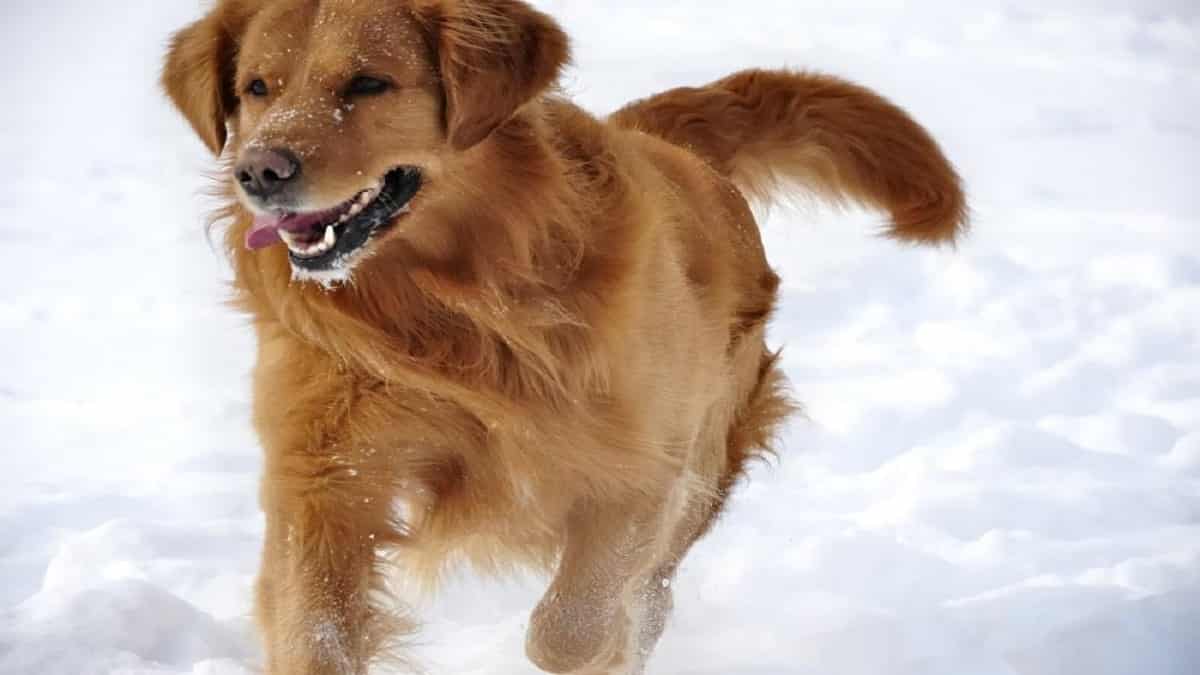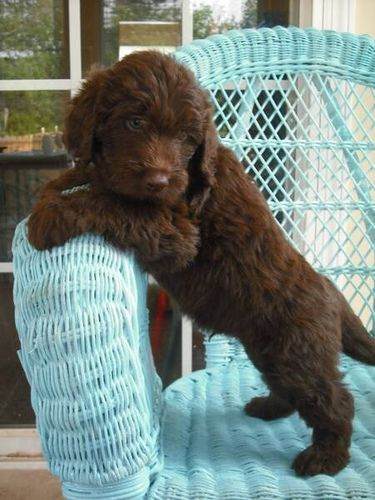The most common signs to see if your dog is anti-social are the dog wants to stay alone and avoids other dogs. Whenever he is in a place where a lot of people or other dogs are present, he will start to run by pulling the leash.
Another very common sign shown by anti-social dogs is the tail tucked in their legs. Such dogs will also have a problem in making eye contact.
People mostly associate dogs with loyalty and forget to notice how much obedient they are. Often you may see your dog being keen to follow the rules you have set or conforming to your training effortlessly.
However, a puppy that was separated from its mother dog too soon requires more focus and training in many ways other than the occasional “catch” and “sit” catchphrases.
Although the reasons may all be entirely natural, it is important you familiarize yourself with the signs of an antisocial dog. So that you can determine the best way to make this transition smooth for the sake of its well-being.
This is how you can tell if your dog is Anti-Social
1) The dog avoids people and other dogs
One common sign that your dog is antisocial is when it always dodges mingling with other dogs or people. Once a stranger (new dog) hit the compound, your dog will seem uncomfortable and may start looking for a hiding place until the other dog is gone.
It is acceptable for a dog to run and hide after hearing loud noises, but this shouldn’t occur when other dogs come near its environs.
2) Dog shows no respect for its space
An antisocial dog does not show respect to humans and other dogs at all. This type of dog will push your hand when you are eating so that you can give it food. The pet may also mount on people’s legs once they enter the compound.
Once you spot such features on your dog, you should be ready to put this kind of behavior in line with a hundred percent consistency. Examples include pushing it away or else your pet will be anti-social forever.
3) Constant pulling while on a leash
When you take your dog out on a leash, it should be able to walk around freely. Well, in case you see your dog dragging when it sees people. Or he tends to run forward when another dog happens to appear from the back, you should know that it’s antisocial.
A complete fine social dog would allow its master to walk ahead and follow behind with speed and not running from people or other dogs.
4) The dog becomes overexcited
Having an overexcited dog shows a sign of a lack of social skills. Once you get home and see your dog jumping, spinning or sometimes continuously barking as if it is pumped that you are home, but the truth of the matter is that it doesn’t know what to do in the given situation.
This shows that the dog has no idea of how to behave; that’s why it craves to unleash all the energy locked all day and does not know how to deal with it.
5) Ears folded flat against the head
A relaxed dog tends to hold his ears forward and maybe slightly to the side. The ears can as well twitch, especially when the dog is listening to some interesting sounds.
When your dog folds his ears back or happens to flatten them against the head, it is an indication that he is afraid or anxious.
6) Tail tucked between legs
The dog’s tail and how it carries it can reveal important characters such as its social stand or its mental state. If the dog tucks its tail between its hind legs, that signifies that it’s terrified. This mostly happens when the dog is feeling as if present around a supreme dog or person.
Tail carriage of this type could also show that the dog admits being inferior and unable to challenge in any way.
Sometimes when a dog tucks its tail, it may start running while seeking hideouts to rescue itself from the impending danger (which might not even be there).
7) Dog crouches on seeing other dogs
By laying down, this dog may be trying to express to the other dog that he is non-threatening to the coming dog, thus a sign of being anti-social.
Subsequently, if the front part of the dog is on the ground, but its hind is in the air, then you got a good social dog.
This position is an invitation to play and is called “play bow.” a dog that lacks social experience may not know what play bow beans and can end up becoming scared or attack the other dog.
8) Refusal to make eye contact
In human culture, eye contact could be one way to express interest, but in dogs, it could mean a threat rather than a measure of goodwill. Depending on the dogs’ socialization experience as a puppy, eye contact can be enough threat to cause an attack.
9) Inappropriate urination
Urination can be a sign of marking territory in dogs, but if it’s done inappropriately, it shows a dog lacks confidence in a situation. An antisocial dog urinates improperly when a new member comes to the house. This happens mostly because it may lose control of its bladder when overly excited.
I have written an article on entering dog’s territory without getting harmed which should be useful when your dog has marked his territory and protecting it.
10) Quick panting
Quick panting noticeable in dogs could be emotional distress caused by a dog being antisocial. A dog will tend to pan quickly even without excessive heat to express fear of an enemy within.
However, a more rapid pant with minimum exertion could mean a severe medical issue and may require specialist assistance
11) Retreating to a far corner of the space you both occupy
Your dog may seem to retreat from people’s existence by dwelling at the furthest corner when people are around or even opting to go to the next room in fear of mixing with the people.
A social dog would be able to mingle with the people on daily activities as part of the family without fear or a feeling of rejection.
12) Aggressive dog growling
Loud growls with long and low rumbles from your dog are also a sign of anti-social behavior. Something like this may happen if your dog is not willing to share its favorite stuff such as a toy with other dogs or doesn’t feel comfortable when other pets are approaching.
This is most common in dog parks where everyone brings their dogs. So make sure you read the article on managing dog aggression in the dog parks.
In extreme conditions, your dog may change its posture by triggering its hunting instincts as a way of getting ready to attack because it wants anyone meddling with its stuff.
13) Block people’s path
When your dog frequently blocks people and other dogs’ path, it remobilizes that it wants to be the alpha and dominate the space. Mostly such a dog won’t be open to any other options when it comes to territory issues.
This antisocial behavior is often noticeable when only one dog has been raised in the compound for a long time, and then another pet is introduced sometime later.
14) Attention seeker
You will depict this feature when your dog starts doing exactly the opposite as the others to create attention, yet it has no intention of mingling with them.
For example, it may lie when other dogs are playing or frequently barks at other pets at the park instead of socializing with them. Contrary, this may mean that your dog does not understand what is supposed to be going on or has a bad feeling of what is happening.
15) Home-bound dog
A social dog would always wish to go out whenever his master is exiting the home. A dog that shows no interest in going out could be scared of the outside surroundings. He may also be fearful of meeting other dogs thinking that they could hurt it. Aggressive attitudes end up developing in the dog and can quickly get into fights with other dogs once forced to leave the compound.
Learn More With the Help of Video
Conclusion
Sometimes the anti-socialism in dogs could be a mental disorder or a normal canine behavior where the dog will show no concern for right and wrong. Thus ignoring any empathy for other dogs. Dogs with this condition will tend to treat others harshly while showing no sign of remorse for their anti-social behavior.
As explained above, it is rather evident that an antisocial dog is no fun at all. The most important thing dog owners disregard is that they have the most significant effect on their dog’s behavior. It is essential to make all introductions to your dog at their earlier stages in life. It makes sure that they nurture positive reactions when the dog interacts as they grow.
A well-socialized dog is always well behaved and well-liked in almost every situation. As much as paying attention to your dog is a critical factor for all dog owners, you should be willing to go the extra mile to make sure you familiarize yourself with your dog and understand it’s body language.
After all, your dog counts as a member of the family. There should be no limit that should stop doing what it takes to make it happy.
But still, don’t hesitate to consult a dog specialist in case you feel you have run out of options to remedy the antisocial behavior of your dog. It’s not as easy as it may seem to read the signs and act accordingly.
References
- https://www.csus.edu/indiv/s/starkj/Faculty/coms142outsiders/history/dog.pdf
- https://www.journals.uchicago.edu/doi/abs/10.1086/675876
Table of Contents



